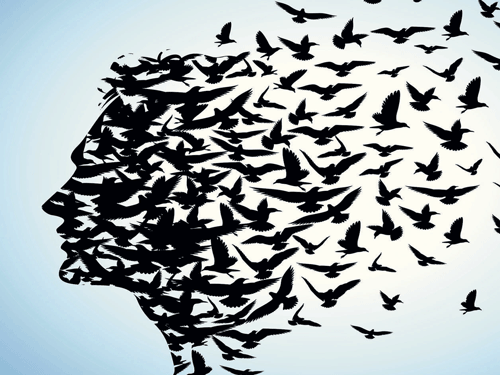
The Last Illusion
Porochista Khakpour
Bloomsbury
2014, pp 319, Rs 450
This is a rich amalgam of myths, legends, and human emotions of love, alienation and courage. These elements are interwoven with premonitions of New York, 9/11 into a fascinating fable of modern times.
Author Porochista Khakpour creates a unique and memorable protagonist. Zal is an Iranian boy who has spent his childhood among captive birds. Shocked by the unusual pale skin and white hair of her newborn son, Zal’s demented mother hides her ‘White Demon’ in inhuman conditions as a detested oddity among her beloved pet birds.
Bereft of human affection and society, Zal identifies with the birds around him, cheeping, shrieking, flapping his arms like wings. A decade after his birth, his sister ‘rescues’ him and draws the attention of the media to his plight. He is named Zal after the hero of Iran’s national epic, the Shahnameh, about the white-skinned prince who was abandoned by his family and raised by a giant bird.
Fascinated by Zal’s story, Hendricks, a behavioural scientist, takes him to America and adopts him as his son. Hendricks showers Zal with love and understanding, and hope for a normal life and future awaits Zal in New York. Zal continues to surprise scientists by his adaptability. Beating all odds, he learns to walk, talk and behave, for the most part, like other people. Yet he cannot completely overcome his bird identity. As Zal grows up, he continues to dream in bird, and secretly enjoys snacking on candied insects. Zal is drawn to magician Silber, who creates the illusion of humans flying like birds.
Defying scientists’ predictions, Zal begins to assert his independent adult human identity, and even gets romantically involved with Asiya, a disturbed and clairvoyant artist. Yet Zal is forever treated very, very carefully by others, and finds himself in “special consideration relationships, where his story would eclipse him... and once again leave Zal the loneliest man on earth.”
The strongest and most enduring aspect of this novel is Zal’s evolution as a human being. Overcoming his miserable bird past, Zal learns to appreciate the feelings of others and reciprocate love. He wants Asiya to “know that he supported what she did — after all, she had taken his story without a qualm, a judgement, without horror and disbelief. She had taken him in just as he was — he owed her the same.” Zal’s intimacy with fellow outcast Asiya motivates him to overcome his fear of dead birds, reach out to fellow human beings, and become whole and ‘normal’. In the course of the story, Zal also learns to value and love his father, Hendricks.
“I’ve come to you over and over in pieces and you’ve put me back together, I owe you my life.” Towards the end of the novel, Zal realises that he has “grown up a lot since you’ve last seen me. It’s not my story that defines me any more.” This freak oddity, this human-bird, sometimes manages to see the truth better than the ‘normal’ people around him. And this quality endears Zal all the more to the reader.
The supporting characters are interesting and convincing, multifaceted as they are with their strengths, flaws and unique experiences. Silber, the gimmickry-loving, glib-talking magician; the generous and affectionate Hendricks; Asiya, who grapples with her own troubled psyche to reach out to Zal; Willa, who tries to bury childhood trauma by eating her way into magnificent obesity — these characters are unique.
The grotesque, dark and deeply sorrowful elements of this story are deftly counterbalanced with dashes of humour. Zal’s efforts to get a job are hilarious, as he breaks free from the past and feels he has nothing but a future. He looks up resumes on line, and cuts and pastes what he thinks might impress prospective employers into hiring someone who had absolutely nothing in the way of life experience. He successfully presents himself as a pilot with a culinary background who went to Yale. This killer resume gets Zal a job as a pet shop attender, where he regresses to fall in love with a canary.
Meanwhile, as the world struggles to regain balance after doomsday forecasts of Y2K, Asiya’s premonitions and Silber’s plans for his last illusion remind us that 9/11 is imminent. The re-invention of those terrible events is a rather contrived climactic point. Silber’s much-publicised illusion to make the Twin Towers disappear and reappear with the help of mirrors goes impossibly off. “The illusion had not gone right, but it had not gone wrong either. It had gone real.” As everyone runs for their lives, Zal is “mesmerized by their faces, the brief moment of joy in all that world-ending clamour.” It is then that he masters that human trick, “a beautiful small and yet essential trick of the spirit, a simple contortion of the will.”
This life-changing finale, this symbolism, seems a bit too clever and laboured. The symbolism at this point overshadows Zal. The profusion of odd, dysfunctional and damaged characters, their freakiness and strange experiences, can also weigh down the narrative. Overall, this is a beautifully written and engrossing read.